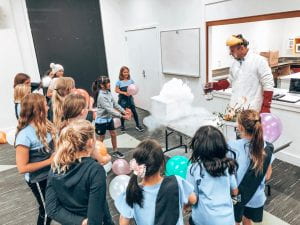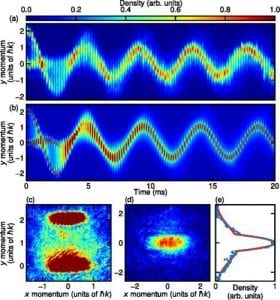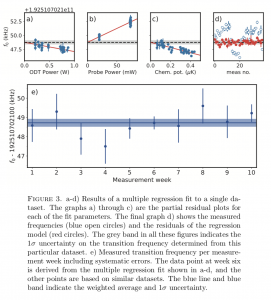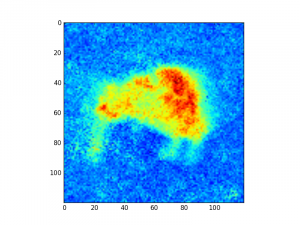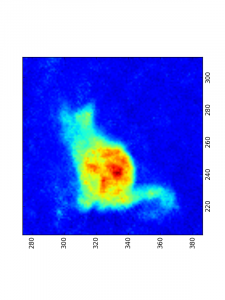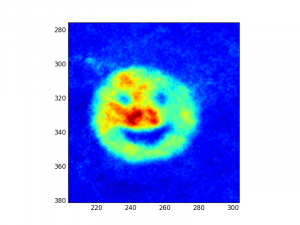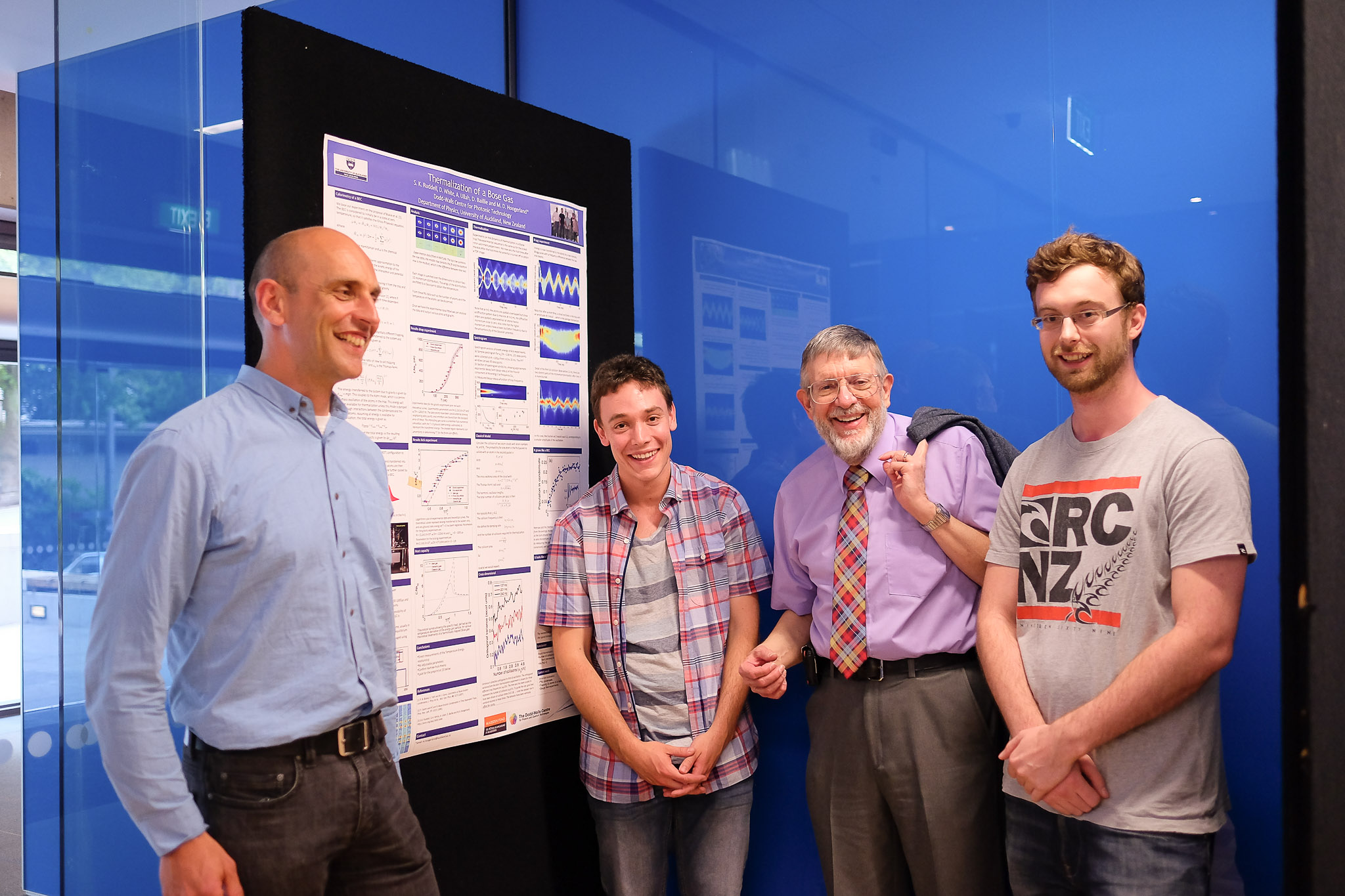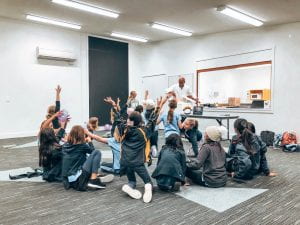
All posts by Maarten
Doctor Thomas
Breakthrough paper published!
We have determined the energy difference between two quantum states in the helium atom with unprecedented accuracy, a ground-breaking discovery that contributes to our understanding of the universe and space-time and rivals the work of the world’s most expensive physics project, the Large Hadron Collider.
Our understanding of the universe and the forces that govern it relies on the Standard Model of particle physics. This Model helps us understand space-time and the fundamental forces that hold everything in the universe in place. It is the most accurate scientific theory known to humankind.
But scientists know the Standard Model does not fully explain everything, for example, it doesn’t explain gravity, dark matter, dark energy, or the fact that there is way more matter than antimatter in the universe.
So scientists are continually testing the Model by manipulating and controlling matter at the atomic level, looking for effects that cannot be explained directly – in this case the helium atom, which is the second most simple atom after hydrogen.
The latest experiment carried out by Dr Maarten Hoogerland from the University of Auckland and the Dodd-Walls Centre for Photonic and Quantum Technologies and Dr Wim Vassen from Vrije University in the Netherlands, was to test the helium atom’s transition between two states of energy. This is sometimes referred to as a quantum jump, or leap.
The significant change in energy in the atom is then precisely measured to estimate the diameter of the nucleus. This is done in an experiment that could fit on a tabletop with ultra-cold gas using an ultra-stable laser, accurate to a million times a million or, if you were using this level of measurement to measure the distance from Earth to the moon, it would be accurate to within a fraction of a millimetre.
“The fact the transition occurred is rare, and a milestone for quantum physics research. It advances our knowledge of the way atoms are put together and hence contributes to our understanding of space-time,” Dr Hoogerland says
“This new result is a great test for our understanding of the Model and also allows us to determine the size of the helium nucleus and of the helium atom. This has been the subject of intensive research for decades so for our experiment to have succeeded is an incredibly exciting result.”
The Large Hadron Collider is the largest machine ever built and a major international project involving hundreds of scientists looking for effects that cannot be explained by the Standard Model directly and for new particles at very high energy that do not fit the Model.
The research is published here: https://rdcu.be/4sOu
A great summary appeared in the New Zealand Herald
Also we appeared on the radio this morning!
More news coverage on the business scoop
Again in Photonics Online!
Thermalisation paper published!
We experimentally and numerically investigate thermalization processes of a trapped 87Rb Bose gas, initially prepared in a nonequilibrium state through partial Bragg diffraction of a Bose-Einstein condensate (BEC). The system evolves in a Gaussian potential, where we observe the destruction of the BEC due to collisions and subsequent growth of a new condensed fraction in an oscillating reference frame. Furthermore, we occasionally observe the presence of defects, which we identify as gray solitons. We simulate the evolution of our system using the truncated Wigner method and compare the outcomes with our experimental results.
Thermalisation paper submitted!
Abstract:
We experimentally and numerically investigate thermalization processes of a trapped 87Rb Bose gas, initially prepared in a non-equilibrium state through partial Bragg diffraction of a Bose-Einstein condensate (BEC). The system evolves in a Gaussian potential, where we observe the destruction of the BEC due to collisions, and subsequent growth of a new condensed fraction in an oscillating reference frame. Furthermore, we occasionally observe the presence of defects, which we identify as gray solitons. We simulate the evolution of our system using the truncated Wigner method and compare the outcomes with our experimental results.
Spectroscopy article submitted!
Abstract:
Improvements in both theory and frequency metrology of few- electron systems such as hydrogen and helium have enabled increasingly sen- sitive tests of quantum electrodynamics (QED), as well as ever more accurate determinations of fundamental constants and the size of the nucleus. At the same time advances in cooling and trapping of neutral atoms have revolutioni- zed the development of increasingly accurate atomic clocks. Here, we combine these fields to reach the highest precision on an optical transition in the he- lium atom to date by employing a 4He Bose-Einstein condensate confined in a magic wavelength optical dipole trap. The measured transition accurately connects the ortho- and parastates of helium and constitutes a stringent test of QED theory. In addition we test polarizability calculations and ultracold scattering properties of the helium atom. Finally, in combination with a similarly accurate measurement in 3He, our measurement will probe their nuclear charge radii at a level exceeding the projected accuracy of muonic helium measurements currently being performed in the context of the proton radius puzzle.
Two-dimensional simulator online!
An extensive revamp of our setup has enabled the study of 2D physics using ultracold atoms. The details of the setup are published here:
Haase, T. A., White, D. H., Brown, D. J., Herrera, I., & Hoogerland, M. D. (2017). A versatile apparatus for two-dimensional atomtronic quantum simulation. The Review of scientific instruments, 88 (11)10.1063/1.5009584
We can let atoms expand in arbitrary potentials, such as a cavity shaped as a kiwi, a cat or a smiley face as shown here. Note that the entire size of the image is about the width of a human hair.
Tapered optical fibre paper published!
A new research facility, using tapered optical fibres as an interface between trapped, ultracold atoms and light propagating in an optical fibre, has come online. The first results were published recently here:
Ruddell, S. K., Webb, K. E., Herrera, I., Parkins, A. S., & Hoogerland, M. D. (2017). Collective strong coupling of cold atoms to an all-fiber ring cavity. Optica, 4 (5), 576-579. 10.1364/OPTICA.4.000576
Kiwi
A kiwi from the atom lab to brighten your day. All kiwis are made from atoms – the only difference is that the one on the right was made today from rubidium atoms.

The image is made with 20000 atoms expanding from a Bose-Einstein Condensate of rubidium atoms in a plane (the plane is made by interfering two 1064 nm laser beams, having a lower frequency that the main resonance in rubidium).
- The kiwi is 150 micrometres in length.
- The atoms have a temperature of 10 nK.
- The height of the barrier made by the green laser is 2 microkelvin.

